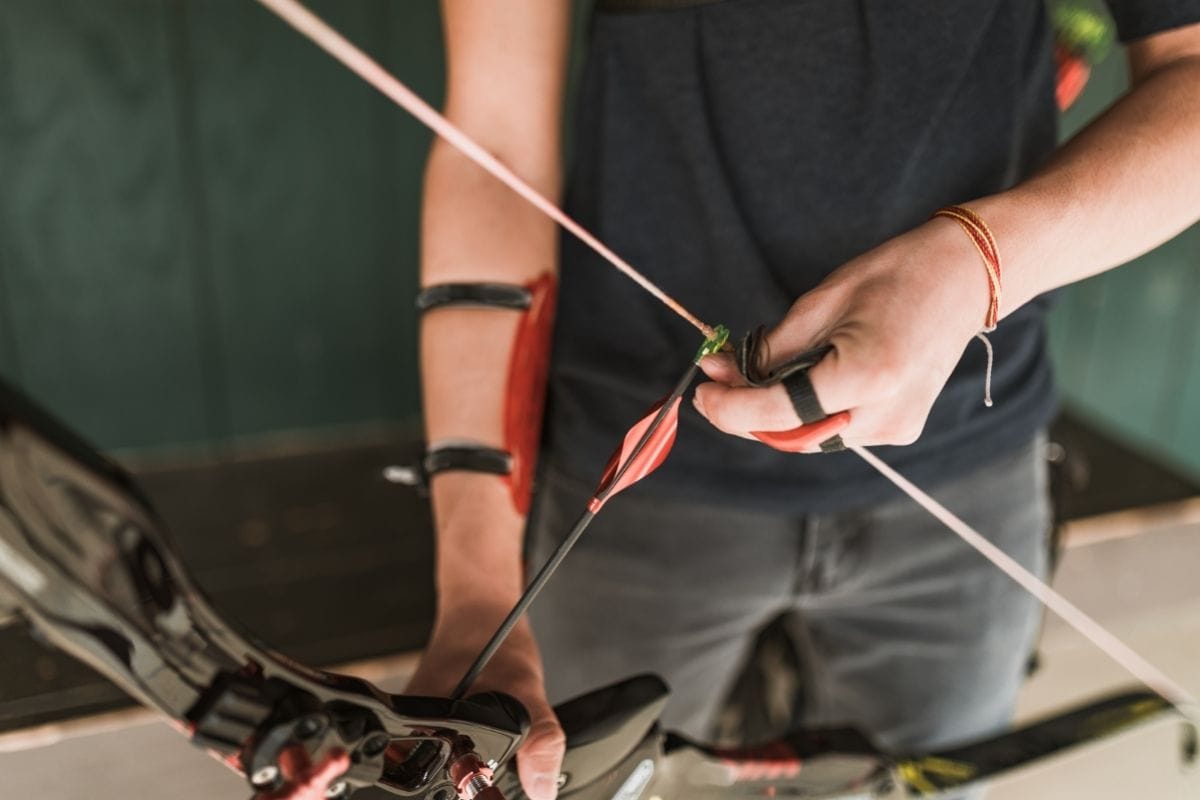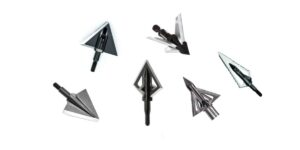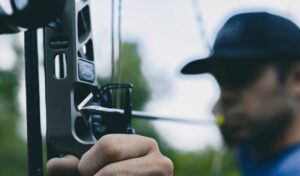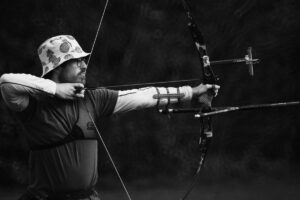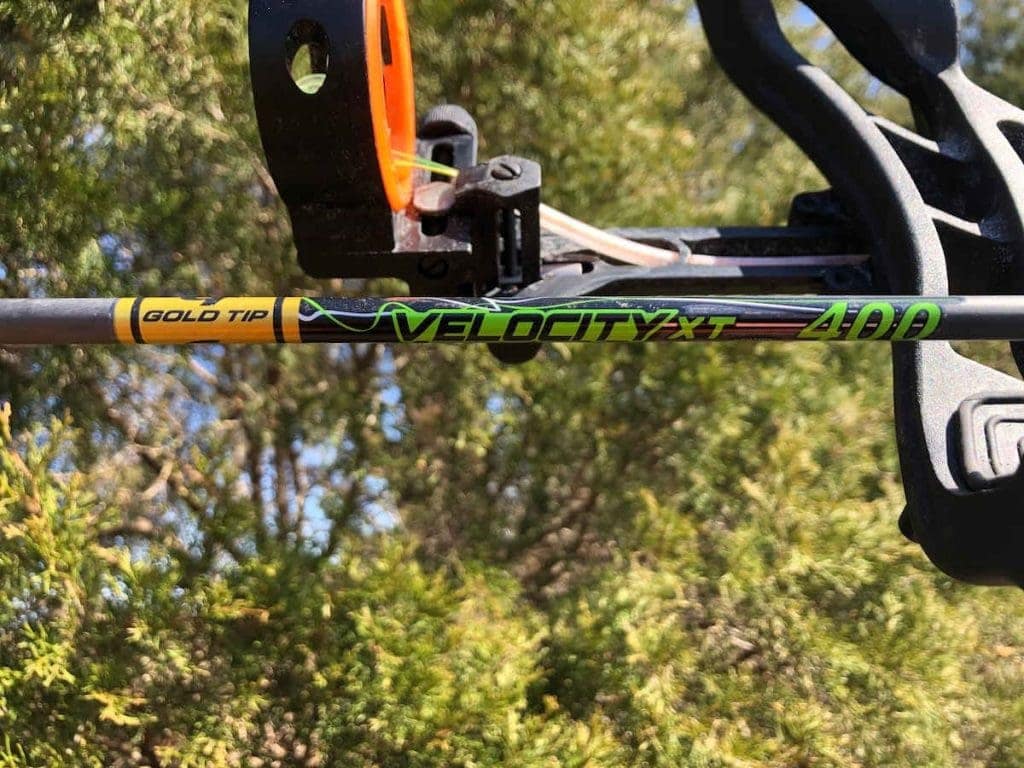Many archers relish the thrill of experimenting with diverse techniques and styles. If you’re an archer who’s been honing your accuracy and now yearns to inject some speed into your game, you may want to explore the art of the archery thumb draw.
This centuries-old technique, originally hailing from Asia, is renowned for its rapid nocking that enables swift use. The thumb draw method is most frequently associated with Asiatic or composite bows.
Incorporating a thumb draw with a recurve bow is feasible, but it may necessitate a change in your bow — this technique is most effective for right-handed archers using a left-handed bow (and vice versa).
The thumb draw emphasizes speed and presents an exhilarating challenge to learn fresh techniques. Explore this guide to unearth more about the thumb draw and potential ways to employ it with a recurve bow.
Contents (Jump to Topic)
ToggleWhat Is The Thumb Draw?
The thumb draw is a distinctive technique of drawing a bow that employs the thumb to hook the string instead of using the fingers.
In contrast, the Mediterranean draw uses the fingers to hook the draw, a common method in Western countries.
While the thumb draw technique may be less prevalent in the West, this traditional method can offer distinct advantages in specific situations.
The thumb draw, also sometimes referred to as the Mongolian draw, is closely associated with bows and archers from Asia. Archers who adopt the thumb draw might be colloquially known as “thumb shooters.”
The thumb draw technique has gained traction worldwide due to its quick-nocking ability.
When Is The Thumb Draw Used?
As an archery enthusiast, I appreciate the many techniques contributing to the sport’s rich tapestry. One such method that often piques interest is the thumb draw.
Traditionally, this style is employed by those using Asiatic or composite bows, but it’s also a favorite among horseback archers.
The allure of the thumb draw lies in its practicality and speed. Picture yourself on horseback, bow in hand, galloping through a field.
There’s no room for fumbling or finger-pinching — you must nock quickly and release accurately. That’s where the thumb draw comes into its own.
This technique allows you to nock swiftly, minimizing the risk of finger pinch that can occur with other methods.
The thumb draw isn’t confined to horseback archery, though. In the world of speed shooting, the rapidity of this method has won it many fans.
However, it’s worth noting that this works best when used with a composite or Asiatic bow. The design of these bows complements the thumb draw, enhancing its effectiveness and efficiency.
Finally, let’s not overlook the benefits of the thumb draw when shooting small bows. The more compact size of these bows presents different angles and challenges that can be skillfully navigated with the thumb draw technique.
You’ll be able to shoot without the risk of finger-pinching and take full advantage of the unique shooting angles that small bows offer.
So, whether you’re a horseback archer, speed shooter, or small bow aficionado, the thumb draw is a technique worth mastering.
After all, in archery, it’s often the smallest adjustments that make the biggest difference.
read.. overdraw a recurve bow?
The Disadvantages Of The Thumb Draw
The thumb draw is most commonly used for speed rather than accuracy.
Because the arrow is typically away from the eye, it’s harder to fine-tune aim. The entire sight picture is different, which can take some time to get used to. Consistency is also difficult with the thumb draw.
There are more moving parts, so more opportunities for things to go wrong. And as it isn’t a forgiving technique, even small issues can become big problems. Finally, it’s a tricky technique to learn.
Even with a composite bow designed for thumb draws, the technique takes some time to master. Of course, all these issues are emphasized when shooting a thumb draw with a recurve bow.
Thumb Draw vs Mediterranean Draw
The key difference between these two techniques is how the archer grips the bowstring. Thumb drawing uses the thumb to hook the string, while Mediterranean drawing uses three fingers to grip the string.
Each technique has its advantages and is associated with specific styles of archery and bows.
Thumb draw is often used with traditional recurve bows, while Mediterranean draw is commonly used with modern recurve and compound bows.
The choice of technique depends on the archer’s preference, the type of bow they use, and the style of archery they practice.
The Archery Mediterranean Draw
The Mediterranean draw, also known as the Three-Finger Draw or Western Draw, is a common and widely used technique in modern archery, particularly in Europe and the Americas.
It’s called “Mediterranean draw” because it is often associated with the archery techniques used in Mediterranean countries.
How To Shoot Thumb Draw
The thumb draw archery does put pressure on the thumb, and poor technique can lead to pain.
It’s important to wear a thumb ring or use tape to protect the skin from rubbing when you pull the string.
Thumb rings are better for a clean release, but the tape is easier to get hold of (particularly if you only want to practice a thumb draw with a recurve bow).
- First, find your nocking point. When shooting with a thumb draw, the arrow rests on the thumb knuckle of your bow hand. The nocking point is typically above the arrow. An advantage of thumb draws is fast nocking, so you want to be sure you have the correct nocking point.
- Now, you can start drawing the bow. Clench your little, middle, and ring finger into a fist. Hold the index finger and thumb in an “L” shape. Place the thumb around the bottom of the nock. Place the index finger gently on the thumb’s fingernail without pressing down hard.
- Pull back the bowstring. You should feel the weight on the thumb and index finger, and this should hold the arrow tight to the bow. The other fingers should be clear of the string and arrow.
- Release by relaxing the index finger and thumb.
Can You Use A Thumb Draw With A Normal Recurve Bow?
The short answer is: sometimes. You can shoot a thumb draw as a right-hander using a left-handed recurve bow, but it’s much harder to use a thumb draw as a right-hander using a right-handed recurve bow.
This is because the bow needs to be flipped to grip properly, meaning the window is cut into the wrong side, and the arrow won’t have a place to rest.
If you wanted to use a right-handed recurve bow, you’d need to learn the thumb draw using your left hand or try tricky string walking.
There are some obvious disadvantages to using a thumb draw with a normal recurve bow. For a start, the recurve bow isn’t designed to be used that way.
You won’t be able to see over the riser, meaning you have to shoot much more instinctively. If you were just learning how to shoot with no prior experience, you’d find the thumb draw on the recurve tricky to grasp.
The grip is another issue with using the thumb draw on a recurve bow. The grip is molded for either a right or left hand, but you’re flipping the usage with the thumb draw.
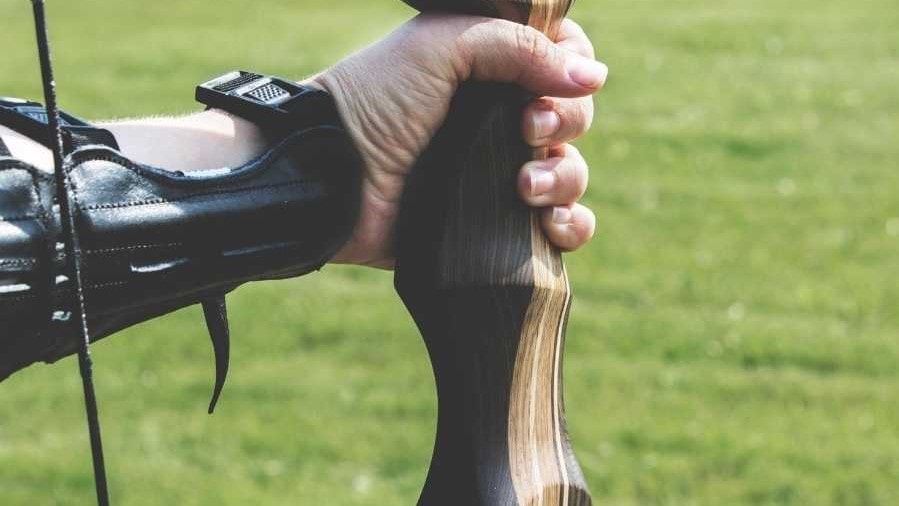
But if you have experience using a recurve bow, using the thumb draw is a fun way to challenge yourself.
Over short distances, you might even be surprised by your level of accuracy. To use a normal recurve bow for right-handed thumb draws, you have to shoot from the left side of the bow.
Hold the thumb lower down on the string to avoid touching the arrow. Then, you can draw back safely and shoot with the thumb draw.
It might take some time to get comfortable (and accurate), but it is possible to shoot this way. This is actually how it’s done in archery competitions in modern Mongolia.
This is preferable if you want to avoid using left-handed club bows or find holding the bow in the wrong hand uncomfortable.
Final Thoughts
Using a thumb draw with a normal recurve bow is possible, but getting used to it might take some time. The easiest way to do it as a right-hander is to shoot using a left-handed bow.
Thumb draw bows are integral to the traditional archery styles of various cultures and have a long history of use in horseback archery, hunting, and martial applications.
But with string walking, you can also shoot a thumb draw as a right-hander with a right-handed bow. It’s a challenging and fun technique to experiment with, but you might struggle with accuracy. After all, this isn’t how the recurve bow is designed to be used.
FAQ
Mediterranean Draw vs Mongolian Draw
The main differences between the Mediterranean and Mongolian draws lie in the grip and release techniques, the type of bows they are associated with, and the archery traditions from which they originate.
The Mediterranean draw is common in modern target archery. It uses a three-finger grip, while the Mongolian draw is a traditional technique primarily associated with thumb grips and traditional recurve bows.

